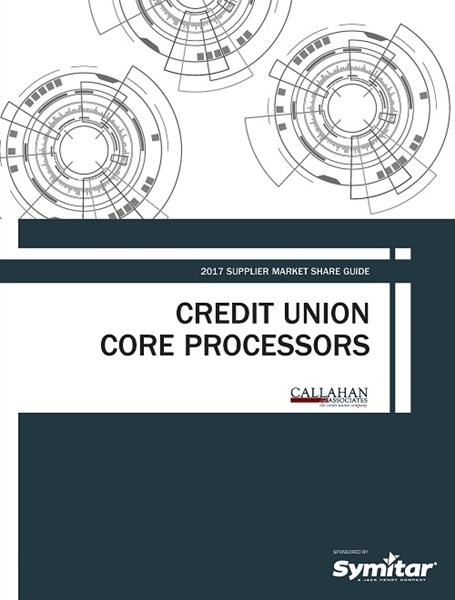Lutheran Federal Credit Union ($10.4 million, St. Louis, MO) made history in 2014 when it received the first new credit union charter in Missouri in nearly 10 years. Lutheran FCU was also one of just three new federally chartered credit unions in the country that year. The credit union got started with a soft launch in May 2015 and officially opened to a nationwide membership in January 2016.
Since its grand opening, the branchless cooperative has welcomed more than 1,800 members. Although part of a shared branching network, nearly all of Lutheran FCU’s members joined the credit union online, and the clear majority conduct all their financial business via online and mobile banking. Lutheran FCU’s virtual banking strategy was a critical leap of faith that is now paying off.
A Foundation In Faith
The long-gestating idea for Lutheran FCU was hatched by leaders of the Lutheran Church Extension Fund (LCEF). The Fund, which provides financing and other services to Lutheran churches and roster church workers, recognized the need for more choice in financial services among members of the Lutheran Church Missouri Synod (LCMS). The National Credit Union Administration granted Lutheran FCU’s charter application in 2014, allowing it to serve all 2.3 million members of the Church nationwide.
CU QUICK FACTS
Lutheran FCU
Data as of 09.30.16
HQ: Saint Louis, MO
ASSETS: $10.4M
MEMBERS: 1,719
BRANCHES: 1
12-MO SHARE GROWTH: 1,068.9%
12-MO LOAN GROWTH: 4,302.8%
ROA: -14.60%
One critical early decision involved how best to serve such a geographically dispersed membership. Lutheran FCU’s executive team vowed to implement a single, easy-to-use virtual platform for account opening, loan applications, and transactional needs.
The credit union’s new charter dovetails with several national trends in financial services. Today, more than 80% of consumers conduct their banking through multiple channels, and more than half of all banking transactions are completed online via web or mobile banking platforms, according to a study by management consulting firm Oliver Wyman.
With the growing acceptance of virtual banking among consumers of financial services, the rise of new, efficient cloud-based technology platforms, and the influx of non-bank competitors including peer-to-peer services and internet banks, it is easier than ever for de novo institutions such as Lutheran FCU to choose the branchless route.
Lutheran FCU selected a vendor that offers both a flexible core system and a range of integrated web-based services. This decision enabled the credit union to go live on day one with a full suite of basic banking products, including deposit accounts, consumer loan offerings (apart from home equity loans), and remote services including online banking, bill pay, and mobile deposit capture.
Core Knowledge At Your Fingertips
Callahan’s 2017 Supplier Market Share Guide: Credit Union Core Processors is a helpful guide for leaders who want to understand the performance and strengths of players in the core space and assess both current or, potentially, future core partners. The Core Guide offers a look at:
- Client performance,
- Aggregate assets for credit union clients,
- Descriptive metrics for each platform.
Contact Callahan to order your copy today.

When it came down to choosing among a few different core processors, one of the things that stood out the most was the ability to onboard members and accept loan applications through the internet, says Amanda Middleton, assistant vice president of operations at Lutheran FCU. Considering we have every new member join through the virtual onboarding process, we couldn’t do it otherwise.

Amanda Middleton, Assistant Vice President Operations, Lutheran FCU
Lutheran FCU’s online membership application is intuitive and structured in a questionnaire format. The member may skip a section if it isn’t relevant, such as adding a joint member. Once the applicant clicks the submit button, the information is immediately and securely transferred to the core.
It’s a very simple process, Middleton says. You answer a couple of questions and then press a button to continue on the next screen. In all it might be seven clicks of a button. The applicant is in control and it’s not overwhelming. ContentMiddleAd
Omnichannel Provides A Unified Expereince
By employing a single digital platform centered on a flexible and dynamic core system, the credit union provides a unified, consistent member experience across multiple touchpoints. This is the essence of the omnichannel approach.
Lutheran FCU’s members can view their accounts and loans the same way whether logging into online banking from home, speaking with a member services representative over the phone, or accessing the mobile banking app on the fly.
Lutheran FCU uses Share One for its core processing needs. Find your next solution in the Callahan Associates online Buyer’s Guide.
The credit union’s staff enjoys fully integrated views across key services and member touchpoints, including online banking, loan and account applications, bill pay, remote deposit capture, and mobile banking. Even credit card transactions, which are commonly posted via a nightly batch process at many institutions, are integrated with the core and updated in real time.
One key to the credit union’s success to date has been its partnership with its core provider. According to Middleton, the credit union keeps in regular communication with the vendor to address questions and issues as they arise as well as to explore the capabilities of the platform. This is of special importance considering Lutheran FCU’s lack of history with any other core provider.
We communicate with our vendor on a regular basis, Middleton says. It’s a constant sharing of what is or not working and where we can go from here. I think it’s a good balance of both sides challenging each other and discussing where we want to go as we grow in our relationship.
You need to have checks and balances in place, but that no longer means printing and retaining things in hard copy. It’s just verifying the systems against one another. Trust the process.
Advice For Branchless Trail Blazers
Despite a lot of long days and sleepless nights, Middleton has no regrets about the credit union’s decision to offer a full complement of services from day one.
We wanted to come out of the gate with everything all at once, Middleton says. We started off with a staff of four and we were all trying to figure out how it was going to work. It was mind-blowing.
Now that we’re through it, I get it, she continues. This approach allowed us to spend six or seven months pecking around, and as of the beginning of this year, we didn’t have to figure anything else out. We don’t have to layer on any additional systems. We are able now to just serve our membership and get this thing going. I think we put the strategy in place pretty nicely.
Middleton admits the decision to go branchless was easier for a startup like Lutheran FCU than it would be for credit unions with an established retail branch network.
I think we knew that early on, even during the process of getting things up and going, Middleton says. When we would speak to other credit unions, the one thing that everybody would say is, Wow, it’s so nice that you don’t have to convert anything. You don’t have to retrain your membership to understand what’s going on.’
That said, Middleton, who calls herself a reformed banker, believes the virtual model can be a viable solution even for institutions with an established branch network. She advises credit union executives to not let fear of the unknown induce paralysis.
For those of us who have been in the industry for any significant amount of time, we’ve had it ingrained in our head that you must print documents, make copies, and file them away, Middleton says. Those days are moving behind us. If you are interested in pursuing a virtual model, whether brand new or converting over to it, just don’t be scared. There is a way to do it. You need to have checks and balances in place, but that no longer means printing and retaining things in hard copy. It’s just verifying the systems against one another. Trust the process.
You Might Also Enjoy
-
How 4 Credit Unions Seed Their Future With Cloud Core Processing
-
3 Ways To Identify Core A-Players
-
Numbers Matter When It Comes To Evaluating Tech Relationships

